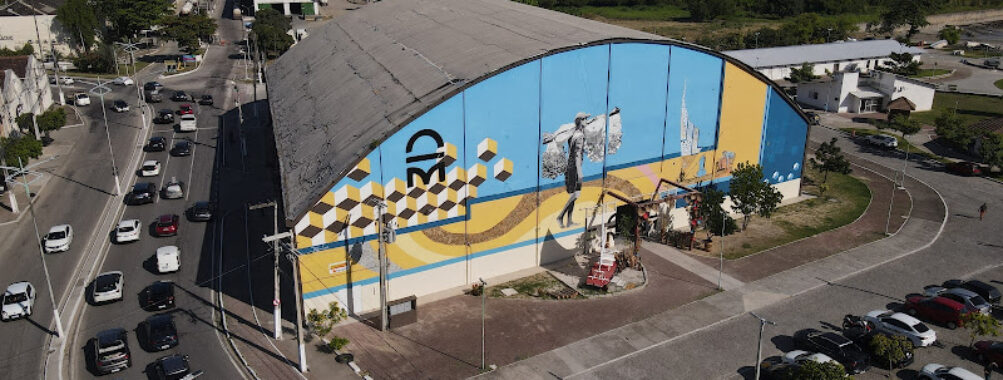
Maceio Prefecture
Table of Contents The Maceió Prefecture, the city’s administrative heart, stands as a quiet yet striking piece of architecture that mirrors the spirit of this coastal capital. It’s not the kind of place that screams for attention, but once you’re there, you feel the pulse of local life humming through its corridors and the surrounding streets. The building itself, with its clean lines and historic undertones, reflects both the modern governance of Maceió and the city’s deep cultural roots. I remember walking past it on a humid afternoon, the kind where the sea breeze feels like a gift, and watching locals come and go—some with business on their minds, others simply pausing to admire the structure’s stately presence. Inside, the Prefecture has a calm, almost ceremonial air. You’ll find accessible entrances and facilities that make it easy for everyone to move around, which is something I always appreciate when traveling. It’s not a typical tourist stop, yet it offers a glimpse into the civic rhythm of Maceió—a side of the city that most visitors overlook while chasing beaches and caipirinhas. The staff, from what I’ve seen, tend to be approachable and willing to help, though the pace is definitely more “Brazilian time” than businesslike efficiency. That’s part of its charm, honestly. Architecturally, the Prefecture blends colonial touches with functional modern design. The exterior, framed by palm trees and the soft clatter of nearby traffic, feels both official and oddly inviting. And if you linger long enough, you’ll probably spot a few locals snapping photos or chatting on the steps—it’s that kind of place, where everyday life and government quietly intersect. The atmosphere isn’t flashy, but it’s authentic, which makes it worth a visit if you’re the kind of traveler who enjoys seeing how a city actually runs beneath the surface. What I personally love about this spot is how it gives you a subtle sense of Maceió’s identity. You can almost feel the layers of history here—colonial trade routes, political shifts, and the evolving energy of a city that’s growing fast but still grounded in its roots. It’s not a museum, but it tells a story all the same. If you’re planning to stop by, the best time to visit the Maceió Prefecture is during the dry season, roughly between September and March. The weather is warm, the skies are clear, and you’ll find the city alive with festivals and open-air events. I once visited in December, and the whole area around Jaraguá had this festive buzz—music drifting from cafes, street vendors selling coconut water, and the sun painting everything gold in the late afternoon. It’s a good time to explore without worrying about sudden rain showers or slippery sidewalks. Morning visits tend to be quieter, especially on weekdays, which makes it easier to take photos or simply enjoy the surroundings without the bustle of administrative activity. Avoid weekends if you’re hoping to go inside, as most offices are closed, but do feel free to wander around the exterior and nearby streets—there’s a lot of character in the old buildings and street art that frame the area. Reaching the Maceió Prefecture is pretty straightforward if you’re staying anywhere near the city center. It’s located in the historic Jaraguá district, an area that’s easy to access by bus, taxi, or rideshare. Personally, I prefer walking if you’re staying nearby—there’s something about strolling through those narrow streets, hearing snippets of Portuguese conversation, and catching glimpses of the sea between the buildings that makes the journey memorable. Just wear comfortable shoes, because the sidewalks can be uneven in spots (a little quirk of older Brazilian cities). If you’re coming from the beachfront neighborhoods like Ponta Verde or Pajuçara, it’s a short drive—maybe fifteen minutes on a good day, depending on traffic. Buses run frequently, though they can get crowded during peak hours. For a more relaxed experience, grab a local taxi or use an app-based service. Drivers here are usually chatty and full of stories about the city—some of the best travel tips I’ve gotten in Maceió came from those spontaneous car conversations. Here’s the thing about visiting a place like the Maceió Prefecture: it’s not about ticking off a tourist attraction, it’s about connecting with the city’s everyday rhythm. Still, a few simple tips can make your visit smoother and more enjoyable. One of my favorite memories from visiting this area was stumbling upon a small art exhibit just a block away—it wasn’t even on my itinerary. That’s the beauty of exploring places like this; you never know what you’ll find around the corner. The Prefecture itself might not be flashy, but it’s a window into the real Maceió, where tradition, governance, and daily life intertwine in a way that feels genuinely local. So, if you’re the kind of traveler who enjoys peeling back the layers of a city, make a little time for the Maceió Prefecture. It’s a reminder that travel isn’t just about beaches and postcards—it’s also about understanding how a place breathes, how it organizes itself, and how its people move through their day. And honestly, that’s what makes travel meaningful, isn’t it?Description
Key Features
Best Time to Visit
How to Get There
Tips for Visiting
Location
Places to Stay Near Maceio Prefecture
Find and Book a Tour
Explore More Travel Guides
No reviews found! Be the first to review!